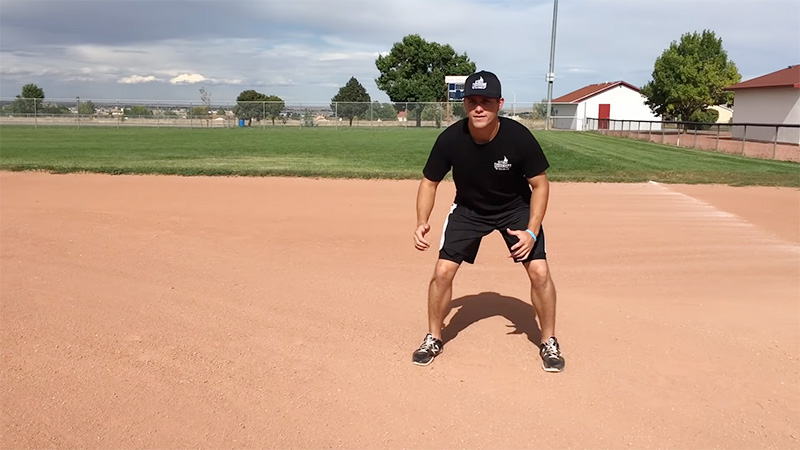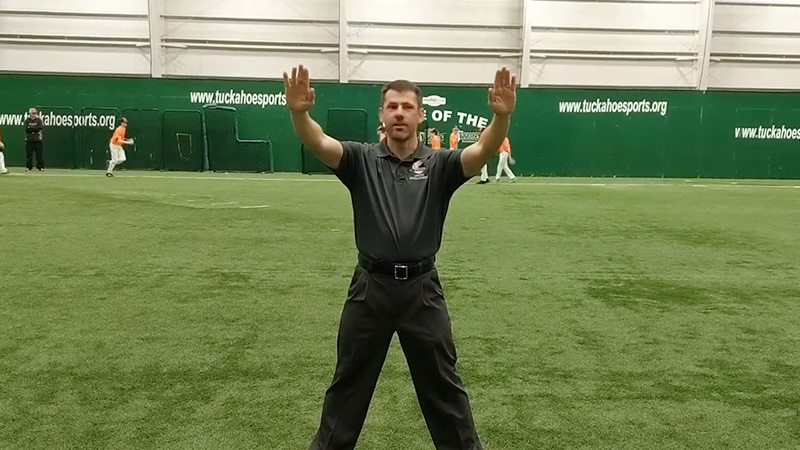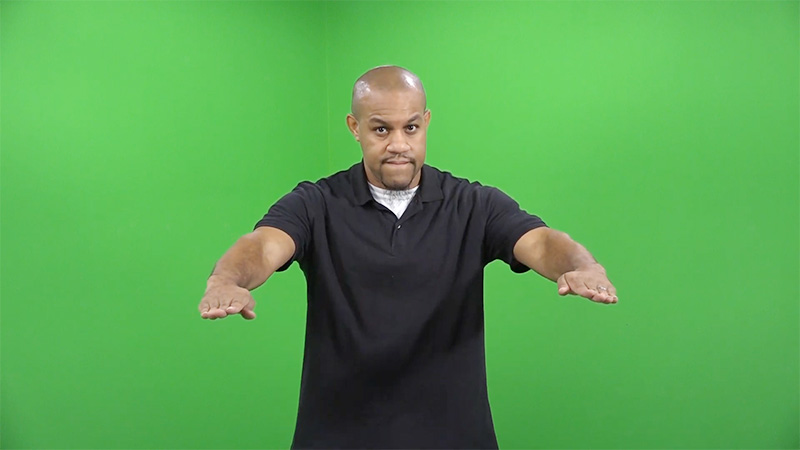Baseball, often referred to as America’s pastime, is a sport rich in tradition, strategy, and excitement. From the crack of the bat to the cheers of the crowd, the game captivates fans with its intricate rules and intricacies.
One crucial aspect of baseball is the concept of being “safe.” In this article, we will explore what it means to be safe in baseball and delve into the significance of this term in the context of the game.
So, let us delve deeper into the meaning of safe in baseball and explore the various scenarios in which baserunners are deemed safe. From reaching bases before tags to eluding rundowns, we will unravel the essence of safety in this beloved sport.
What Is Safe in Baseball?
In the realm of baseball, being considered safe is a pivotal concept for baserunners. When a baserunner is deemed safe, it signifies that they have successfully reached a base without being put out by the defensive team.
Being safe allows the runner to maintain their position on the base and continue their offensive contribution to their team’s scoring efforts.
When a baserunner is running the bases, their primary objective is to touch each base in succession until they reach home plate, scoring a run for their team.
However, they must contend with the defense’s attempts to eliminate them. In these situations, being safe is the desired outcome as it enables the baserunner to maintain their position and remain a potential scoring threat.
Protection Provided by Touching a Base
One of the key aspects of safety in baseball is the protection granted to baserunners when they touch base.
When a baserunner successfully reaches a base and establishes contact with it, they are temporarily shielded from immediate elimination by the fielders. This means that the runner cannot be tagged or forced out while they are in contact with the base.
This protection is vital for baserunners as it provides them with a secure position on the base, allowing them to assess the situation and potentially make strategic decisions for further advancement.
When a runner is touching a base, they are not susceptible to being tagged by a defensive player, even if the fielder possesses the ball.
Furthermore, the safety offered by touching a base extends to force-play situations. In force plays, a baserunner can only be put out if the defense touches the base before the runner arrives.
As long as the baserunner reaches the base before the defensive player tags it or touches it to force them out, they are considered safe.
The concept of safety in baseball adds an element of strategy and excitement to the game. It allows baserunners to retain their presence on the base and continue to contribute to their team’s offensive momentum.
Objectives of Baserunning

In the game of baseball, baserunning plays a crucial role in the offensive strategy. The objective of baserunning is quite simple yet fundamental. Some of their roles are as followed.
Advancing From One Base to Another to Score Runs
One of the roles of the baserunner is to advance from one base to another in order to ultimately score runs for the offensive team.
Baserunners strive to make their way around the bases, utilizing their speed, agility, and strategic decision-making to maximize their team’s scoring opportunities.
When a batter successfully makes contact with the ball and becomes a baserunner, their primary focus shifts from hitting to baserunning.
Their goal is to quickly and safely reach the next base, either by running directly or by reacting to the ball’s location and the actions of the defensive team. Each base gained brings them closer to scoring a run, which is a crucial element in determining the outcome of a baseball game.
Highlighting the Defensive Strategies
While baserunners aim to advance and score, the defensive team has a variety of strategies and tactics to prevent them from doing so.
The defensive players, including the pitcher, catcher, infielders, and outfielders, work together to eliminate baserunners through a combination of skill, coordination, and knowledge of the game.
One common defensive strategy is attempting to tag out a baserunner. When a fielder possesses the ball, they can try to touch the baserunner with it before they reach the base.
If successful, the baserunner is declared out. This can occur when a runner is caught between bases or is attempting to steal a base.
Another defensive strategy involves force plays. In force-play situations, a fielder can touch the base with the ball to force the baserunner out.
This typically occurs when there is a baserunner on first base and batter hits the ball, forcing the runner at first to advance to second. In such cases, the fielder at second base can catch the ball and step on the base before the runner reaches it, resulting in an out.
Furthermore, defensive players can execute pickoff moves, which involve throwing the ball to a base where a baserunner is standing too far from the base. This puts the runner in a vulnerable position, making it easier for the defense to tag them out.
Situations in Which Runners Have Deemed Safe

The use of safe in Baseball can happen in different situations. In this case, the following situations happen most of the time.
Safe at First Base
When a batter makes contact with the ball, their immediate goal is to reach the first base safely.
In this situation, the baserunner is considered safe if they can touch first base before the fielder either tag the base with the ball or receives the ball in their possession and attempts to tag the runner.
If the baserunner successfully reaches the first base before these actions occur, they are deemed safe, and their team gains a valuable baserunner.
Safe at Other Bases
Apart from first base, baserunners also strive to reach second base, third base, and ultimately home plate. In these scenarios, the baserunner is considered safe if they can reach the base before being tagged by a fielder.
This typically occurs in force play situations, where the defensive player must touch the base with the ball to force the baserunner out. If the baserunner arrives safely at the base before being tagged, they are declared safe and maintain their position on the base.
Eluding Tags in Rundowns
Sometimes, a baserunner may find themselves caught in a rundown, also known as a pickle or a hotbox. This happens when the defense initiates a series of quick throws and tags in an attempt to trap the baserunner between two bases.
In this situation, the baserunner’s objective is to elude the tags and return safely to a base. If the baserunner can skillfully maneuver, dodge tags, and successfully reach a base without being tagged, they are considered safe and continue their baserunning progress.
In all of these situations, the determination of whether a runner is safe or out is made by the umpires. Umpires closely observe the play, consider the timing of actions, and make judgments based on their interpretation of the rules.
Their decisions are essential in determining the outcome of a baserunning play, and their call of safe or out is binding.
Umpires’ Role in Determining Safe Play
Umpires play a vital role in baseball by serving as impartial arbiters responsible for making critical decisions on whether a baserunner is safe or out.
They hold the authority to make these determinations based on their interpretation of the rules and their observations of the game. Umpires are positioned on the field in strategic locations to have the best view of the action and make accurate judgments.
Factors Considered by Umpires in Determining the Outcome
When making safe/out calls, umpires consider several factors to reach a decision. These factors include:
- Timing: Umpires assess the timing of the actions performed by both the baserunner and the fielder. They observe when the baserunner touches the base and when the fielder attempts to tag the runner or touch the base for a force play.
- Tagging: Umpires closely observe whether the fielder successfully tags the baserunner with the ball before the runner reaches a base. They pay attention to any contact between the ball and the baserunner’s body or uniform.
- Positioning: Umpires take into account the positioning of the fielder in relation to the base and the baserunner. They determine if the fielder has touched the base before or after the runner’s arrival, or if the fielder’s tag attempt was successful or missed.
- Visual evidence: Umpires rely on visual evidence to aid their decision-making. They carefully watch the play unfold, taking into account the movement of the baserunner, the fielder, and the ball.
Visual Evidence and the Positioning of the Ball in Relation to the Runner
The visual evidence and the positioning of the ball in relation to the baserunner are crucial in determining whether a runner is safe or out. Umpires rely on what they see on the field to make accurate judgments.
They observe the baserunner’s foot making contact with the base, any attempts by fielders to tag the runner, and the location of the ball during the play.
The positioning of the ball is particularly significant in situations where a runner is attempting to beat a tag or reach a base before a force play is executed.
Umpires closely monitor whether the fielder possesses the ball while touching the base or if the ball reaches the base before the baserunner.
In some cases, umpires may also consult with other umpires on the field to ensure accurate decisions are made, especially on close or disputed plays.
Ultimately, the umpires’ judgment on whether a baserunner is safe or out can have a significant impact on the game’s outcome. Their impartiality, expertise in the rules, and reliance on visual evidence help maintain the integrity of the game and ensure fair play.
The Basic Rules of Safe Vs. Out Calls in Baseball
In baseball, there are several basic rules that govern safe and outcalls. These rules provide a framework for determining whether a baserunner is safe or has been put out by the defensive team. Here are the key rules regarding safe and outcalls in baseball:
Force Play
A force play occurs when a baserunner is obligated to advance to the next base because a teammate behind them is also running toward that base.
In force play situations, the fielder must touch the base with the ball before the baserunner arrives to record an out. If the baserunner reaches the base before being tagged or the base is touched, they are considered safe.
Tag Play
A tag play refers to a situation where a fielder tags a baserunner with the ball. To record an out, the fielder must maintain control of the ball while touching the baserunner before they reach a base.
If the baserunner is tagged before reaching a base, they are declared out. However, if the baserunner successfully touches a base before being tagged, they are considered safe.
Base Touching
To be considered safe, a baserunner must physically touch the base with any part of their body. Simply running over or near the base is not sufficient. The baserunner must make contact with the base itself for it to be considered a safe arrival.
Overrunning First Base
If a baserunner overruns the first base after successfully reaching it, they can be tagged out if they make an attempt to advance to the second base. However, if the baserunner returns to first base before being tagged, they are safe.
Interference
If a defensive player interferes with a baserunner’s ability to reach a base, the umpire may call interference and rule the baserunner safe.
It’s important to note that umpires are responsible for making the final safe or out calls on the field.
Their judgment is based on their interpretation of the rules, the visual evidence of the play, and their positioning on the field to witness the action. Umpires play a critical role in ensuring fair play and maintaining the integrity of the game.
These basic rules guide the determination of safe and outcalls in baseball, allowing for consistent and fair decisions regarding baserunners’ status during the course of a game.
Safe Vs. Out Calls: At A Glance
| Situation | Safe Call | Out Call |
| Force Play, (Tagging the Base) | Baserunner reaches the base before the fielder tags it | Fielder touches the base with the ball before arrival |
| Tag Play (Fielder Tags Runner) | Baserunner touches a base before being tagged | Fielder maintains control of the ball and tags the runner before reaching a base |
| Base Touching | Baserunner physically touches the base | Baserunner fails to touch the base |
| Overrunning First Base | Baserunner returns to first base before being tagged | Baserunner attempts to advance without returning |
| Interference | A defensive player interferes with a baserunner’s ability to reach a base | – |
FAQs
What happens if a baserunner slides past a base and is tagged before returning?
If a baserunner slides past a base and is tagged by a fielder before returning to the base, the baserunner is considered out. To be safe, the baserunner must maintain contact with the base until they are sure they can safely advance to the next base.
Can a baserunner be called safe if they slide into a base after the fielder has touched the base with the ball?
No, a baserunner cannot be called safe if they slide into a base after the fielder has already touched the base with the ball. In this situation, the fielder has made a force play, and the baserunner must reach the base before the fielder touches it with the ball to be deemed safe.
Can a baserunner be called safe if they are tagged while they are off the base but their foot is touching it?
No, a baserunner cannot be called safe if they are tagged while their foot is touching the base but they are off the base. To be safe, the baserunner must have contact with the base itself, not just have a body part touching it.
What happens if a baserunner misses a base while advancing?
If a baserunner misses a base while advancing, they are required to return and touch the missed base before they can continue running.
If the defensive team notices the missed base and appeals to the umpire before the next pitch or play, the umpire can declare the baserunner out for failing to touch the base.
End Call
The concept of safe in baseball is fundamental to comprehending the dynamics of the game. In baseball, safe refers to the status of a baserunner who successfully reaches a base without being put out by the defensive team.
It signifies that the runner is protected from immediate elimination by the fielders and can continue their progress around the basepaths, contributing to their team’s scoring efforts.
The interplay between baserunners and the defense adds excitement and strategy to the game, making baseball a beloved sport for players and fans alike.
I’m sure that you’ve got my points in this blog. See you soon with something new about Baseball. Till then stay safe and connected. Have a nice day.







